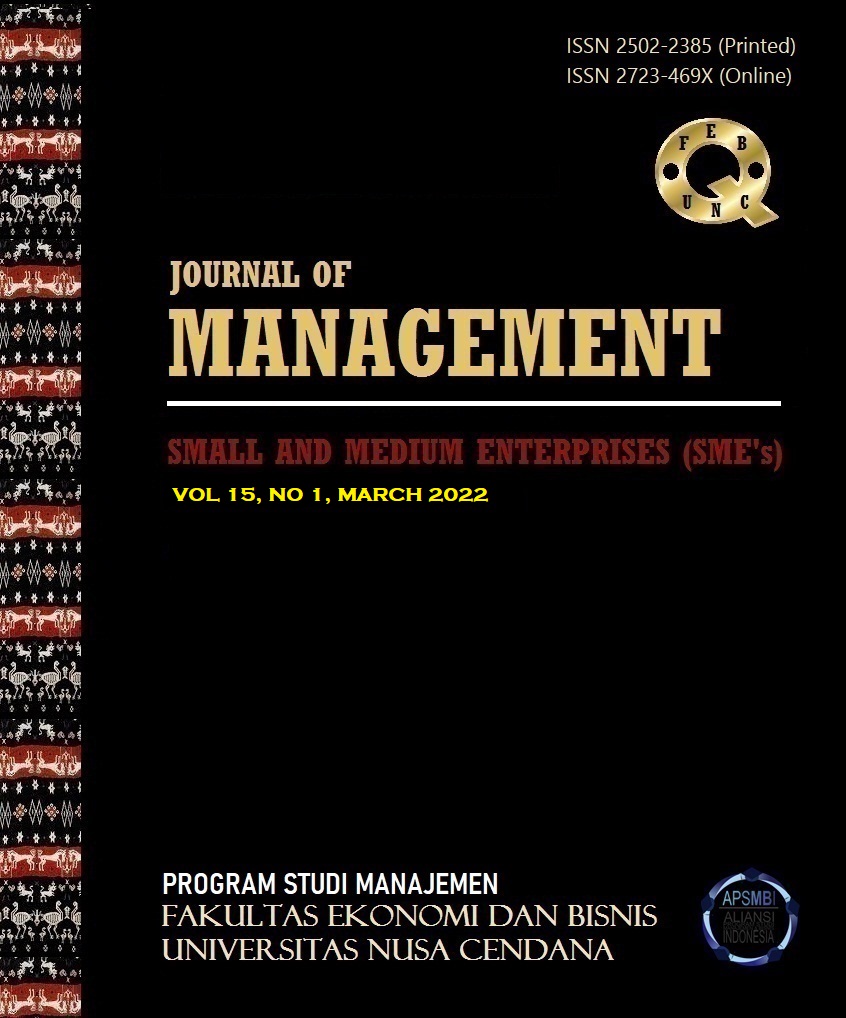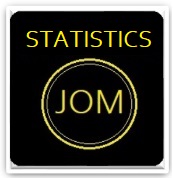BLUE ECONOMY DEVELOPMENT IN INDONESIA
Abstract
This work is highlighting the possibilities to enhance blue economy development in Indonesia with environmentally friendly and sustainable solutions to assure successful future and growth. Literatures review and Focus Group Discussion were conducted to collect Indonesia profiles and potential factors to be developed in blue economic strategic planning. Blue economy employment opportunities would enhance gender balance also due to specialization job offers where females proved to be potentially more productive than males. Marine Spatial Planning (MSP) originates from nature conservation approach in the Great Barrier Reef. MSP has gain since then a lot of attention due to overused of marine areas. Ecosystem based approach for MSP could result in clean, healthy, safe, productive, and diverse ocean. It could influence where and when the human activities could occur. MSP normally require authority to plan the one and another to implement. Funding normally has government based but could be supported with grants, partnerships, and private sector funding. All activities have to be monitored to assure progress of achievements and environmental effect.
Keywords: Blue Economy Development, Indonesia, Gresik, Marine Spatial Planning
Downloads
References
Algae Biomass Organization. (2019). Renewable and sustainable commodities derived from algae. [online] Available at: https://algaebiomass.org
Annual Report Indonesia Focus. UNICEF, 2019.
bps.go.id. 2021. Badan Pusat Statistik. [online] Available at:
Cameron, Lachlan, and Xander van Tilburg. The Case for Small and Medium Scale Renewable Energy Investments in Indonesia. Policy Brief. ECN Policy studies, Mar. 2016.
Caron, D., Garneau, M., Seubert, E., Howard, M., Darjany, L., Schnetzer, A., Cetinić, I., Filteau, G., Lauri, P. and Jones, B. (2010). Harmful algae and their potential impacts on desalination operations off southern California. Water Research, 44(2), pp.385-416.
Chia R.S.l , 2017. Sustainable approaches for algae 10tilization in bioenergy production
Dahno I., 2000. International Economic Law Kyiv: Interregional Academy of Personal Management
Doumen D., Dennison D., Doumen M., 2004 Market research is easy Rostov-on-Don: Phenix
Dutu, R., 2016. Challenges and policies in Indonesia’s energy sector. Energy Policy, 98, pp.513-519.
Energy Management Programmes for Industry, IEA, 2012
Gielen, Dolf, et al. Renewable Energy Prospects: Indonesia. IRENA, 2017. Gresikkab.bps.go.id. 2021. Badan Pusat Statistik. [online] Available at:
Gu, A. and Zhou, X., 2020. Emission reduction effects of the green energy investment projects of China in belt and road initiative countries. Ecosystem Health and Sustainability, 6(1), p.1747947.
Hartono, Djoni, et al. “Comparing the Impacts of Fossil and Renewable Energy Investments in Indonesia: A Simple General Equilibrium Analysis.” Heliyon, vol. 6, no. 6, June 2020, p. e04120, 10.1016/j.heliyon.2020.e04120. Accessed 10 Nov. 2020.
Indonesia – Countries & Regions – IEA. “Indonesia – Countries & Regions – IEA.” IEA, 2016, www.iea.org/countries/Indonesia.
www.imf.org. 2021. [online] Available at:
www.imf.org. 2021. [online] Available at:
“Indonesia (IDN) – Demographics, Health & Infant Mortality.” UNICEF DATA, data.unicef.org/country/idn/.
“Indonesia | Facts, People, and Points of Interest.” Encyclopædia Britannica, 2019, www.britannica.com/place/Indonesia.
“Indonesia | Global Focus”---. Reporting.Unhcr.org, reporting.unhcr.org/node/10335.
“Indonesia – Urban Settlement | Britannica.” Encyclopædia Britannica, 2020, www.britannica.com/place/Indonesia/Urban-settlement.
ITS, Heriot-watt. The Place of Blue Energy In The Blue Economy: Developing An Indonesian Blueprint. 2021
Laurens N.L. 2017. State of Technology Review – Algae Bioenergy An IEA Bioenergy Inter- Task Strategic Project. IEA
Najafi, G., Ghobadian, B. and Yusaf, T. 2011. Algae as a sustainable energy source for biofuel production in Iran: A case study. Renewable and Sustainable Energy Reviews, 15(8), pp.3870-3876.
Maulidia, M., Dargusch, P., Ashworth, P. and Ardiansyah, F., 2019. Rethinking renewable energy targets and electricity sector reform in Indonesia: A private sector perspective. Renewable and Sustainable Energy Reviews, 101, pp.231-247.
Miyata, Y. and Shibusawa, H., n.d. Environmental And Natural Disaster Resilience Of Indonesia. Mori, A., 2020. Foreign actors, faster transitions? Co-evolution of complementarities, perspectives and sociotechnical systems in the case of Indonesia’s electricity supply system. Energy Research & Social Science, 69, p.101594.
Msp.ioc-unesco.org. 2020. Overview. [online] Available at:
Nozdreva R., Sineckiy B., Kormyshev V., Myasoedov S., Polyanova T., 2000 Organisation and Management of foreign economic activity Moscow: INFRA-M
“OES | Ocean Energy | GIS Map Tool.” Www.Oceanenergysystems.org, www.oceanenergysystems.org/ocean-energy/gis-map-tool/. Accessed 10 Nov. 2020.
Priyoko Prayitnoadi, R, et al. “Analysis of Sea Wave Power Plant Design in Bangka Island Indonesia.” IOP Conference Series: Materials Science and Engineering, vol. 694, no. 10.1088/1757-899X/694/1/012021, 21 Nov. 2019, p. 012021, 10.1088/1757-899x/694/1/012021. Accessed 10 Nov. 2020.
Santika, W., Urmee, T., Simsek, Y., Bahri, P. and Anisuzzaman, M., 2020. An assessment of ener policy impacts on achieving Sustainable Development Goal 7 in Indonesia. Energy for Sustainable Development, 59, pp.33-48.
Shaukat, Amama, et al. “Board Attributes, Corporate Social Responsibility Strategy, and Corporate Environmental and Social Performance.” Journal of Business Ethics, vol. 135, no. 3, 7 Feb. 2015, pp. 569–585, link.springer.com/article/10.1007%2Fs10551-014-2460-9, 10.1007/s10551-014-2460-9.
Schmidt, T., Blum, N. and Sryantoro Wakeling, R., 2013. Attracting private investments into rural electrification — A case study on renewable energy based village grids in Indonesia. Energy for Sustainable Development, 17(6), pp.581-595.
Seaweed.ie. 2019. The Seaweed Site :: information on marine macroalgae. [online] Available at: http://www.seaweed.ie
Sørensen, P. and Whitta-Jacobsen, H., 2005. Introducing Advanced Macroeconomics. Maidenhea McGraw-Hill.
“Study in Indonesia | THE World University Rankings.” Times Higher Education (THE), 16 Feb. 2017, www.timeshighereducation.com/student/where-to-study/study-in-indonesia. Accessed 10
Nov. 2020.
Sugianto, Denny Nugroho, et al. “Wave Energy Reviews in Indonesia.” International Journal of Mechanical Engineering and Technology, vol. 8(10), Oct. 2017, pp. 448–459., www.iaeme.com/IJMET/issues.asp?JType=IJMET&VType=8&IType=10.
Taranuha U., Zemlyakov D., 2002 Microeconomics Moscow: Lomonosov Moscow State University I Servis.
The World Bank. Available at:
Thirlwall, A., 2006. Growth And Development. Houndmills, Basingstoke, Hampshire: Palgrave Macmillan.
Varian, H. and Varian, H., 1992. Answers To Exercises, Microeconomic Analysis, Third Edition. Ne York: Norton.
Wave Energy Scotland Limited, 2016. High level cost metrics for WEC machine element World Energy Investment – Country Focus. Attracting Private Investment to Fund Sustainable
Recoveries: The Case of Indonesia’s Power Sector. IEA, July 2020.
Yazdani-Chamzini A. et al. 2013: Selecting The Optimal Renewable Energy Using Multi Criteria Decision Making
Yuaningsih, L., Febrianti, R. and Kamran, H., 2020. Reducing Co2 Emissions Through Biogas, Wind And Solar Energy Production: Evidence From
INDONESIA. International Journal of Energy Economics and Policy, 10(6), pp.684-689. Zerkin D., 2000 Political Science Rostov-on-Don: Phenix
Zikra, Muhammad. “Preliminary Assessment of Wave Energy Potential around Indonesia Sea.” Applied Mechanics and Materials, vol. 862, no. 10.4028/www.scientific.net/AMM.862.55, Jan. 2017, pp. 55–60, 10.4028/www.scientific.net/amm.862.55. Accessed 5 Sept. 2019.

 Oksana Razladova(1*)
Oksana Razladova(1*)



